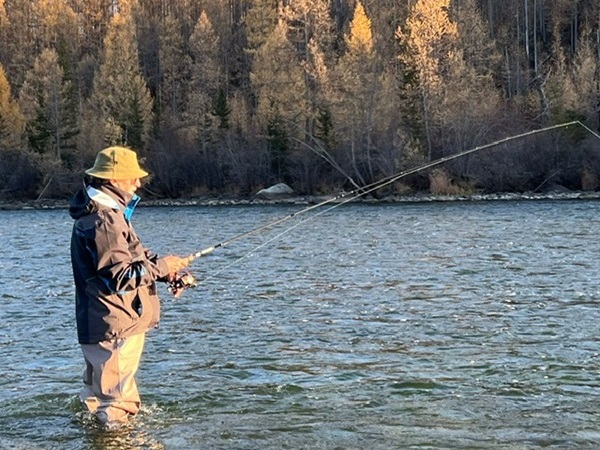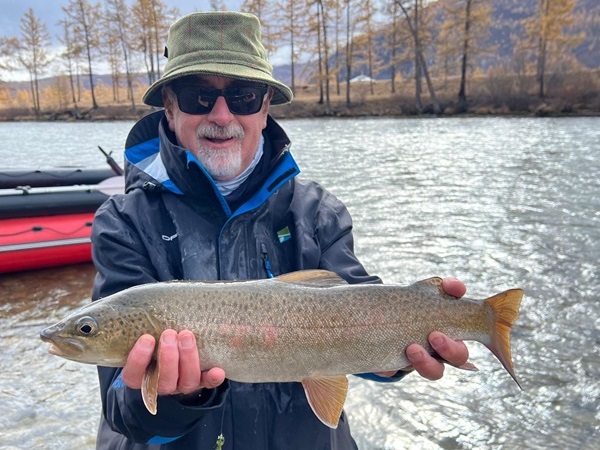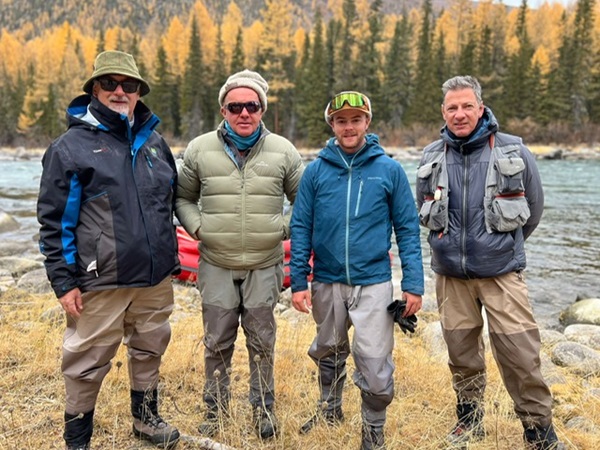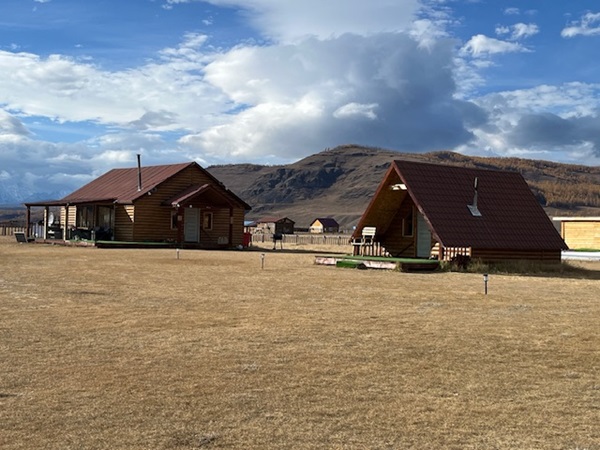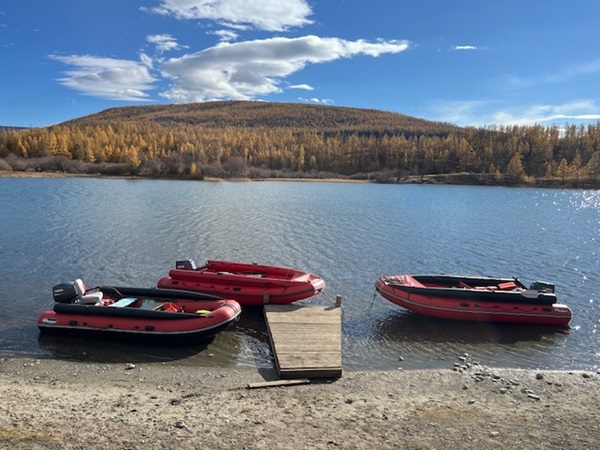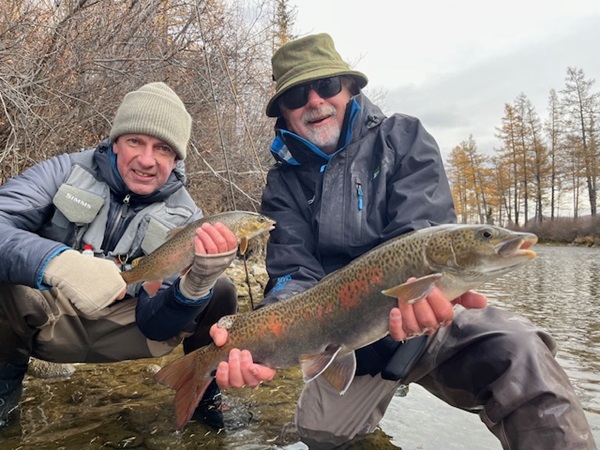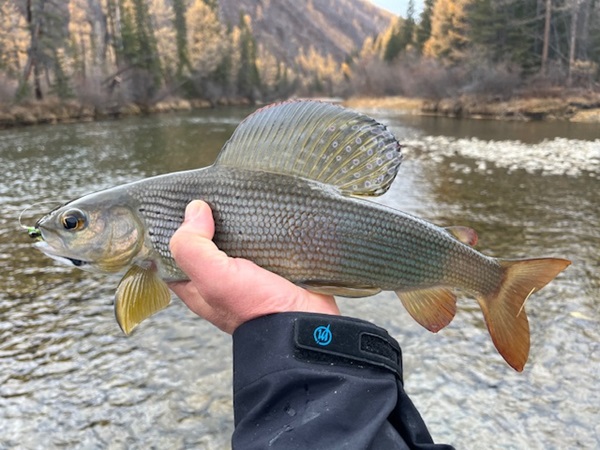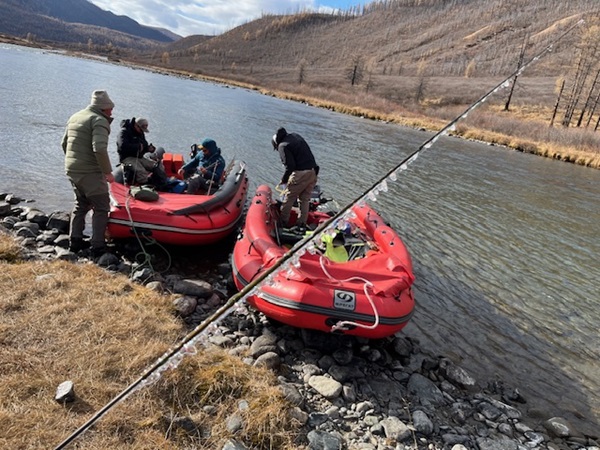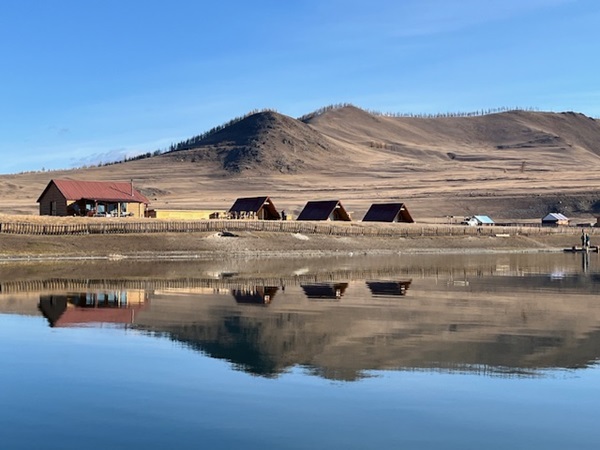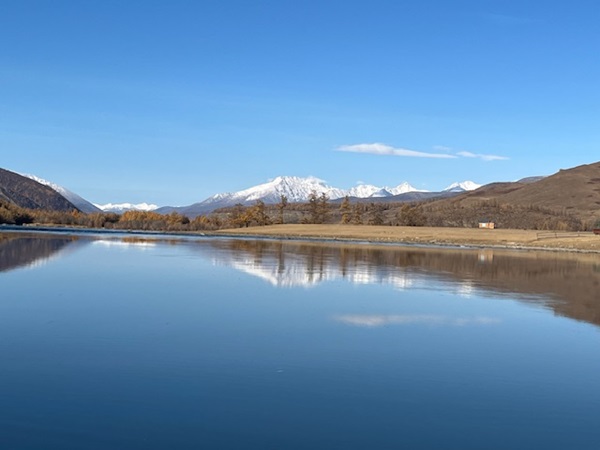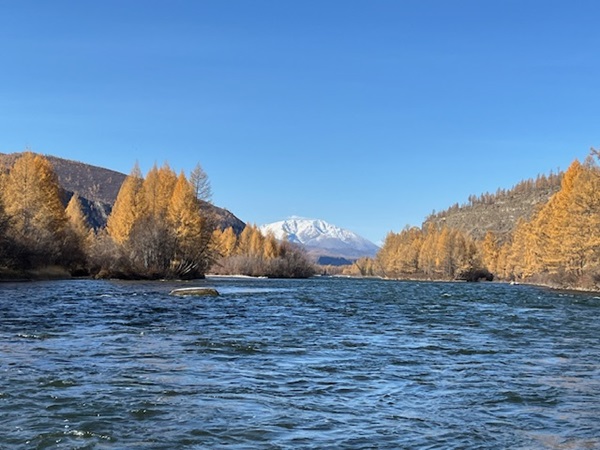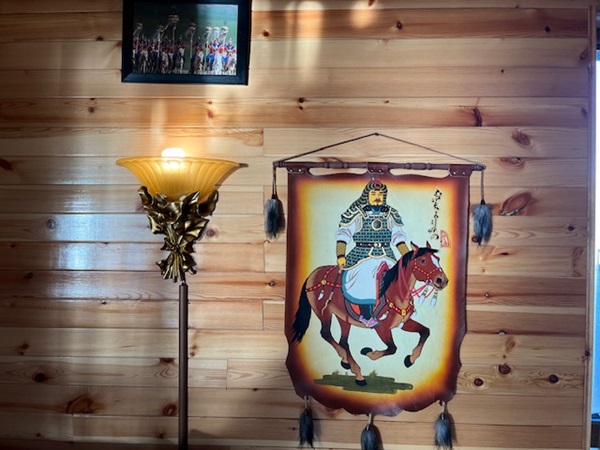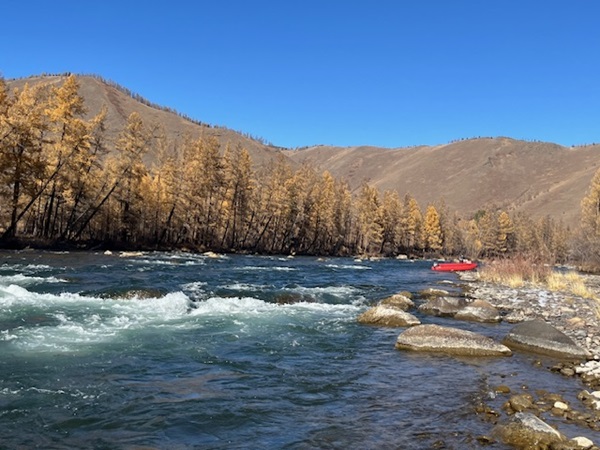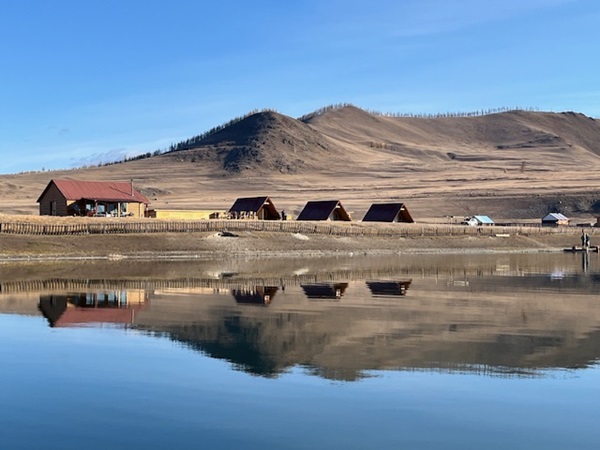 Taimen Lodge camp in Mongolia;
Credit: Chronicle.lu
Taimen Lodge camp in Mongolia;
Credit: Chronicle.lu
I recently got the unique opportunity to participate in a once-in-a-lifetime experience, to travel to Mongolia and not only visit the capital city, Ulan Bator / Ulaanbaatar, but also experience the northern wilderness there.
This third part addresses the camp and fishing, with Part 1 covering the introduction, Mongolia and Ulan Bator, and Part 2 covering travel (including the off-road adventure) and flora and fauna / wildlife.
Camp
This was the last group of anglers for the season, which started mid-June as soon as the fishing season opened; with around fifteen weeks, it's a narrow window during which anglers can seek out their prey.
Located on the Shishged river, just downstream from a lake and close to where the Tengis river flows into it (the confluence), the camp had been built on grasslands by the water's edge as clearing a forest area would have been both much more work as well as illegal as the Larch forests are protected.
It was one of around half a dozen such camps dotted along the shoreline - some commercial, some private - with a number of gers and wooden huts for the nomadic herders and their families.
There were three twin cabins, each equipped with two single beds, a couple of chairs and tables, and a wood-burning stove which threw out a lot of heat - as long as it was kept lit. Some nights we allowed it to die, the direct result being that the air was freezing but the bedding kept one warm under the covers; the other option was to get up hourly and feed the stove which meant that it was roasting that one did not need any bed covers...
The cook and her family stayed in a ger, the camp manager and his colleagues stayed in another hut, and the dining cabin had a table that could seat a dozen, a bar with a good choice of whisky and soft drinks plus a coffee maker, a kitchen, a lounge area, and a wood-burning stove, plus a photo gallery on one of the walls that provided encouragement at every mealtime. Plus a Satlink wifi service which only serviced that cabin, which meant that we could communicate with the wider world before and after breakfasts and evening dinners.
The cooked breakfasts comprised eggs, bacon and pancakes, with bread, butter and jam, as well as tea, coffee and juice (the latter self-supplied); dinners comprised a freshly-prepared basic salad plus meat (beef, chicken, pork) and either rice, dumplings or potatoes. Some vegetables were included, but not for every meal, with no fruit either, reflecting the Mongolian diet.
After breakfast, the fishing guides were each given packed lunch which they served and we enjoyed on the river banks: hot broth, either a warm rice and meat dish or a sandwich with meat, cheese, lettuce and tomato, plus coffee - enough to keep one warm and the energy levels sustained until we got back to camp in the evenings.
There was a washing block too, powered by a generator (which also serviced the dining cabin), consisting of two toilets, two showers and a sauna. We quickly worked out that we could not always have hot water in the mornings, and some evenings too, with the generator stopping of its own accord or if it had not been powered up before we got up. All in all, though, the camp staff did a great job. But it was a bit challenging if one wanted to visit the wash block during the night, when crawling out of a cosy bed to walk around 150 metres in temperatures down to -10C...
And all around the camp was a wooden fence, to keep some animals in and others out. Interestingly, there had been a large ger beside the twin cabins but this has disappeared one day when we returned from fishing; in its place was a raised wooden structure which formed a base, a platform on which to place one's furniture and belongings, both to stop the cold from seeping up and also to stop the rodents from entering from underneath.
Fishing
Four anglers, two guides and two rigid inflatable boats - that needed to be inflated each morning as overnight temperatures fell to -10C - powered by 50hp impeller outboard engines (no risk of propellers catching on riverbed rocks).
We travelled downstream on the Shishged river, further each day reaching up to 25km from the camp, sometimes over slow water, sometimes over fast water, sometimes navigating rapids, mostly with sizeable rocks both visible and invisible beneath the surface.
We (mainly the guides, whose eyes were trained for this) were spotting the Taimen in stretches where they are known to lie, with the big fish almost immune to the proximity of the boats with engines running. We then alighted the boats at islands or gravel banks, wading ankle-, knee- and sometimes waist-deep in the icy waters.
We used both fly-fishing and spinning techniques, both necessitating different rods, with lighter fly rods for the Lenok trout and heavier ones for the Taimen. Each angler brought on average three rods/day, plus tackle boxes, etc. With a 15 kg check-in baggage allowance on the internal flight, we had to select our tackle and clothing very carefully indeed when packing. The fly-fishing was primarily large flies (streamers) resembling small fish with sinking lines, with some floating lines used for mouse/rodent imitations; it was too late in the season to fish dry flies as that was for primarily July when the fly life was abundant.
We set off at around 09:00 - 09:30 most mornings, returning around 18:00 - 18:30 in the evenings, stopping for packed lunches on the river banks for around 30 minutes daily.
Most mornings ice formed on the lines and rod rings as we motored our way downstream to the angling locations, sometimes in fast water (for the Taimen) and sometimes in the slower / still waters (for the Lenok trout and the smaller grayling). One day, when we went up the Tengis river, temperatures never rose above zero, with icy winds from Siberia not helping.
While the Taimen were the ultimate prize, I was primarily interested in the Lenok trout. Informed beforehand that the average size is 1-2 lbs, with them growing up to 10 lbs, my goal was to catch a 4 lb fish. By lunchtime on the first day my goal had been reached, with first a 2.5 lb and then a 3 lb Lenok in quick succession from the same pool, then a couple of smaller ones, then another stretch of the river yielding both a 7 lb fish and then an 8 lb fish, all Lenok and all netted; after lunch, we fished a slow-flowing shallow backwater with a couple of deep pools. I found the grayling, with around a dozen caught as I made my way downstream until I found a deep pool against the far bank from where I extracted a 5 lb and then a 6 lb Lenok. Fishing beyond my wildest dreams, and the cold was forgotten...
We were well insulated, with lined trousers or thermals, plus three or four layers above the waist, plus our chest-high fishing waders, waterproof jackets, scarves plus neck gaiters, and gloves where we could pull back the fingertips (I ended up wearing gloves when motoring between fishing stretches and removing them when fishing, but I ensured I brought a small towel with which to dry my hands after returning each and every fish to the water, sometimes after a photo opportunity, but always holding the fish until it swam off to return to from where it came.
The Tengis river excursion resulted in the first two Taimen of the week, a 110 cm fish to another of our group and a 76 cm one for myself. These were caught with fish-like lures cast with spinning rods; the other Taimen were caught using heavy flies, some with two hooks, and some resembling mice or other rodents trying to swim across the surface - most successful in the late afternoon as the sun started to dip.
The "Tengis day" was certainly the coldest, with icy Siberian winds the strongest that day; interestingly, travelling downstream was a lot more bumpy and colder than going upstream, possibly because we were going faster and the wind was stronger. Dinner had to wait as we huddled around the wood-burning stoves, getting some warmth back into our bodies.
The other days saw us venture further and further downstream the Shishged river, as the water presented more and more pools where larger Taimen were lurking. We got fish of 100 cm, 128 cm and 136 cm, with a similar number being hooked and lost, one smashing a rod in the process as it swam off quickly just as it was about to be netted.
We got a number of other Lenok trout as well, with another 7 lber to the net on the last afternoon, along with a number of grayling over the 2 lbs mark, bringing to a close a wonderful angling adventure. That evening we feasted on a delicious leg of roast lamb, potatoes and vegetables, with the whisky brought out to celebrate the conclusion of the last week of the angling season. All that remained was to get a few hours sleep (after packing), a 04:00 alarm call, a quick breakfast and an early start in the dark on the way (not road...) back to civilisation.


